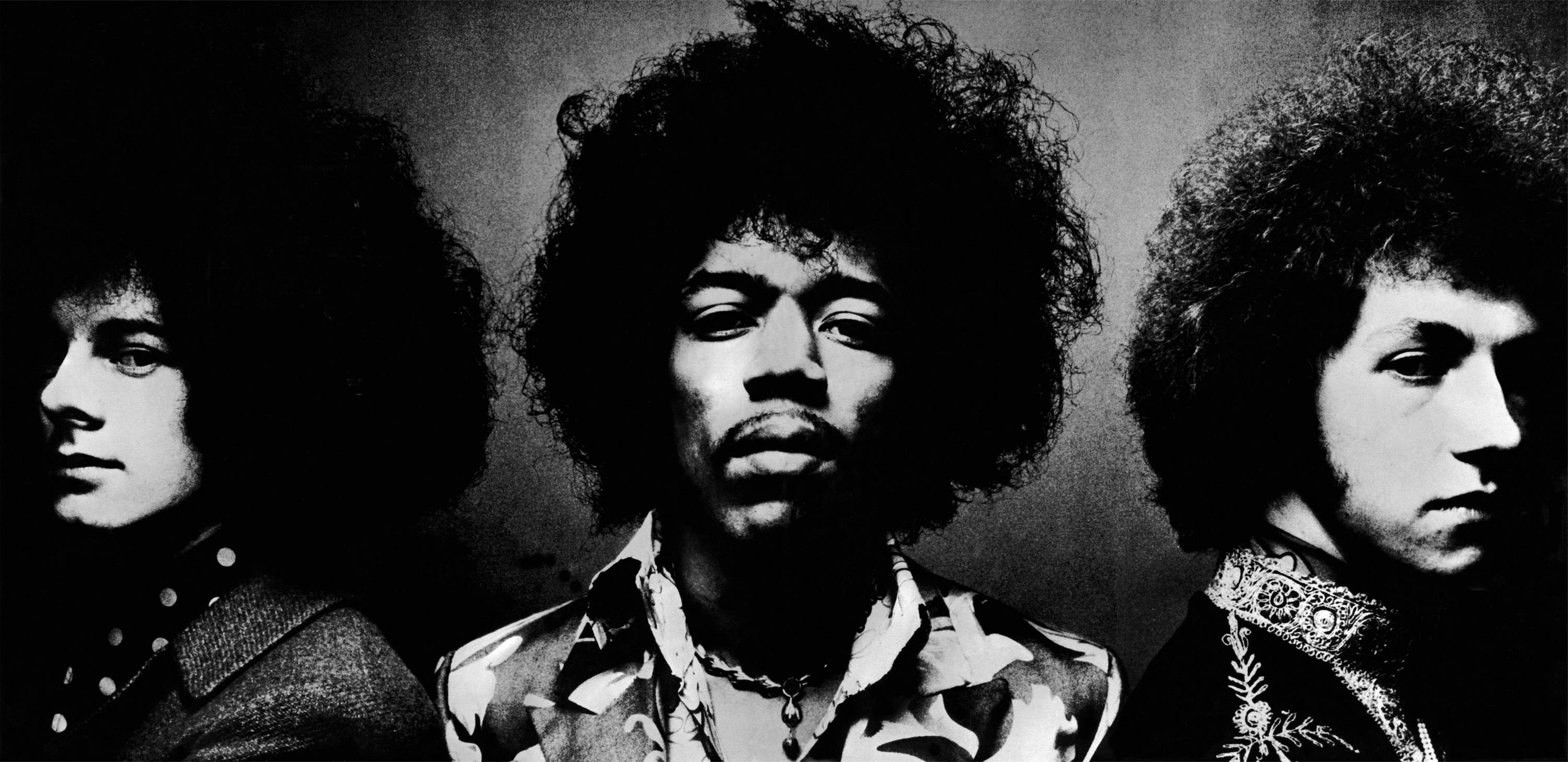

Jimi Hendrix was the most gifted instrumentalist of all time, a self-taught electric guitarist whose fluid, immersive style was perfectly suited to embrace—and then revolutionize—the late '60s psychedelic rock movement.
The Seattle-born musician always paired awe-inspiring tone and feel with incomparable songs which struck a balance between experimentation and tradition.
Woodstock Sunday night headliner Jimi Hendrix didn't take the stage until 9 a.m. Monday morning, but the guitarist nevertheless closed out the festival in memorable style. During a two-hour set, he ran through plenty of recognizable hits—"Hey Joe," "Purple Haze," "Foxey Lady"—and teased out a sprawling version of "The Star Spangled Banner."
Although the song's recognizable melody was intact, Hendrix took liberties with nearly everything else. He improvised distortion- and effects-filled detours that circled around the song's structure, and coaxed out a psychedelic, blurry tone that was hypnotic and elegiac. All told, the instrumental was mournful, frustrated and angry—a reflection of the Woodstock generation's patriotic disillusionment and a striking farewell to how things used to be.
On this song especially, Hendrix's unique style and technique came to the forefront. A self-taught player who couldn't read or write music, Hendrix was a natural guitarist driven by feel, emotion and instinct. Texture, sound quality and emotional impact mattered more than skill or rigor; as a result, his music was fluid and immersive, and perfect for the burgeoning late '60s psychedelic rock movement.
Born in Seattle, Hendrix was raised by his father, a one-time member of the U.S. Army. As a child, the future star was shy and soft-spoken, but drawn to music and the work of B.B. King, Robert Johnson and Muddy Waters. In fact, young Hendrix used to strum a broom and pretend it was a guitar, and later taught himself to play a one-string ukulele.
Hendrix's father luckily encouraged this aptitude, buying him a $5 used acoustic guitar in 1958 and then an electric guitar a year later. The latter purchase spurred Hendrix to join a band called the Rocking Kings, although he wasn't yet thinking of music as a viable career choice: like his dad, he enlisted in the U.S. Army. While training to be a paratrooper, he injured himself during a jump and was honorably discharged in 1962.
This opened the door for Hendrix to work as a session guitarist. Using the moniker Jimmy James, he performed with Ike and Tina Turner, Sam Cooke, the Isley Brothers and Little Richard. He also played live with the latter, where his magnetic, flamboyant stage presence did not go over well, and he was fired.
1966 was a pivotal year for Hendrix. He stepped out on his own with the band Jimmy James and the Blue Flames, which nabbed a Greenwich Village residency at the legendary Café Wha? One of these gigs caught the ear of former Animals member Chas Chandler, who became Hendrix's manager and encouraged him to move to London. It was there that Hendrix formed the Jimi Hendrix Experience, along with two British musicians, bassist Noel Redding and drummer Mitch Mitchell.
Chandler's hunch was correct: the U.K. embraced the Jimi Hendrix Experience. Both "Hey Joe" and "Purple Haze" hit the top 10 of the singles charts, and the group's 1967 debut LP, Are You Experienced, hit No. 2 and remained on the charts for eight months. On the album, Hendrix's wise-beyond-his-years, soulful voice served as a warm counterpoint to the fractured psychedelic sounds swirling around him, which could be disorienting (the title track), noisy ("Foxey Lady") or tranquil ("The Wind Cries Mary").
To increase his reputation as a can't-miss performer, Hendrix set his guitar on fire during a March 1967 performance in London—a trick which drew the ire of the headlining band but plenty of press attention. More notably, Hendrix repeated the stunt at the 1967 Monterey Pop Festival in California: at the end of a cover of the Troggs' "Wild Thing," he torched and then smashed his Fender Stratocaster.
This move cemented his popularity in the U.S. Are You Experienced became a hit there later in the summer, and set the stage for the looser, more experimental Axis: Bold As Love (1967) LP December, a LP boasting the psychedelic classics "If 6 Was 9" and "Castles Made Of Sand."
The Jimi Hendrix Experience took to the road for much of 1968, but also kept innovating. Exhibit A: That year's double LP Electric Ladyland, which encompassed everything from zoned-out R&B, friend garage-pop and funhouse mirror psych-rock—as heard on the 15-minute abstract excursion "Voodoo Chile" and an evocative, keening cover of Bob Dylan's "All Along The Watchtower."
Less than a year later, the Jimi Hendrix Experience dissolved. Hendrix played with a variety of players throughout 1969 and into 1970—as heard on the live album, Band Of Gypsys (1970)—but his exhausting lifestyle, chemical indulgences and massive fame caught up to him. On September 18, 1970, Hendrix was found dead in London, having asphyxiated after inhaling his own vomit while intoxicated.
In the years since, posthumous releases and tours inspired by Hendrix's music have kept his legacy alive. Despite his relatively short career, he remains an influence on guitarists everywhere—a psychedelic rock pioneer whose work and approach touches all styles of music.
Inductees: Jimi Hendrix (guitar, vocals; born November 7, 1942, died September 18, 1970), Mitch Mitchell (drums; born July 9, 1946, died November 12, 2008), Noel Redding (bass; born December 25, 1945, died May 11, 2003)